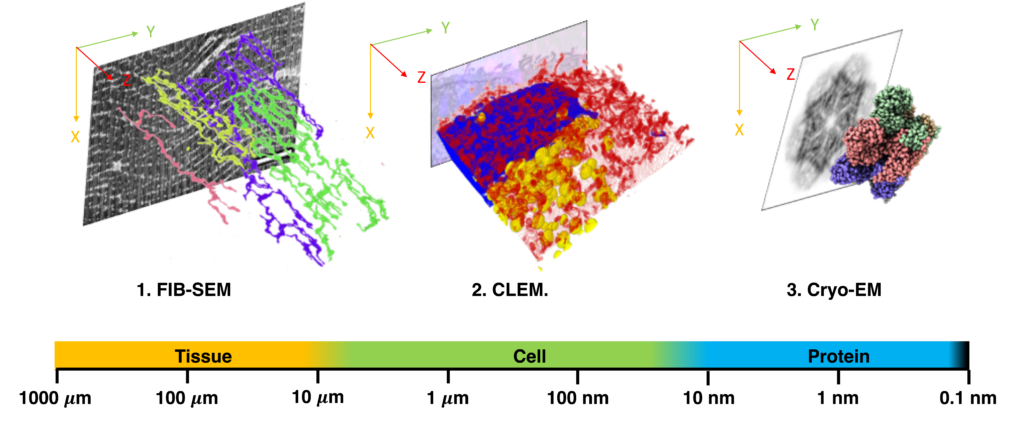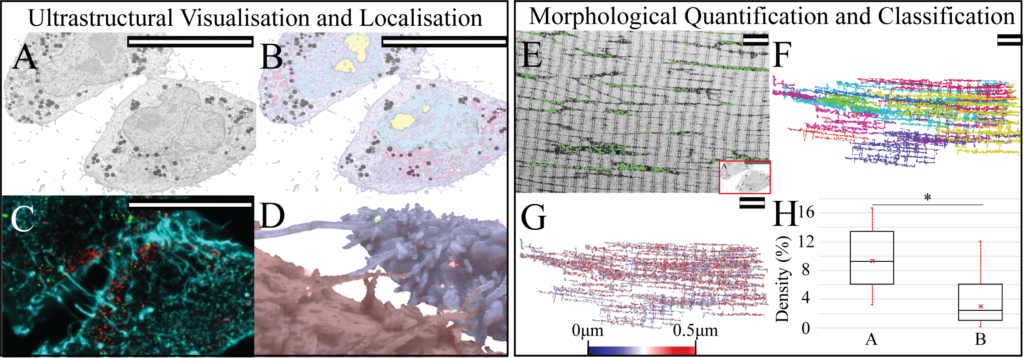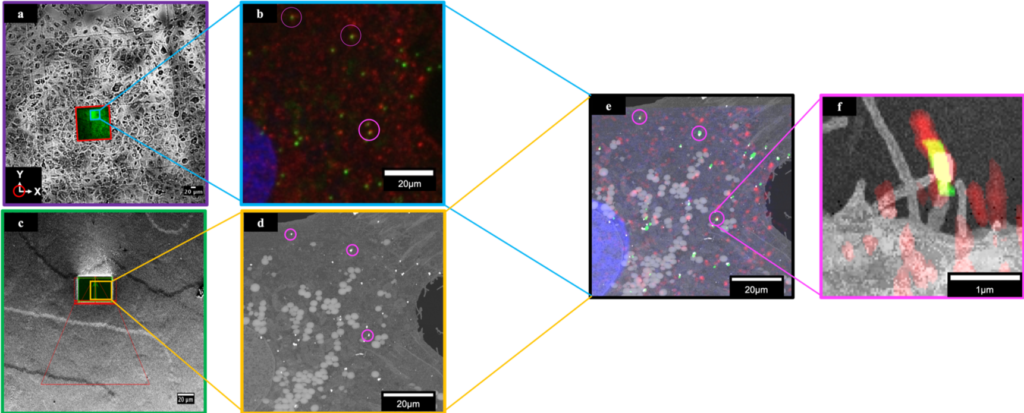Research Outline
My research aims to create a battery of advanced light/electron microscopy techniques and support applications to develop a quantitative three-dimensional structural understanding of cellular and biomolecular function of large volumes of tissues at the nanoscale. These techniques will apply to a wide range of biological questions of interest.
Research Directions
Bacterial Biofilms
Bacterial biofilms, responsible for the vast majority of chronic human infections, are accumulations of bacterial communities embedded in a matrix of extracellular macromolecules and are particularly prevalent in implantable medical devices and body surface infections. These microbial communities differ from their individual planktonic (free-floating) cells in numerous ways, from the physiochemical microenvironment to the density and heterogeneity of microbial species that surrounds these cells. This dynamic three-dimensional matrix provides an advantage to these communities by shielding them from systemic antimicrobials, complement attack, phagocytosis and camouflaging them from the immune system in general. The close packing of bacteria within biofilms provides for ideal circumstances for horizontal gene transfer and the coordination of gene expression through quorum sensing, increasing antimicrobial tolerance and allowing these communities to respond in unison to challenges presented by the host. As the impact of bacterial biofilms on human health is clear, it is essential that we learn more about the fundamental biology and organisation of the bacterial communities within the biofilm and its interactions with host tissues.
Developing Multimeric Protein Scaffolds for Novel Therapeutics
Generating a long-lasting positive clinical outcome to bacterial infections requires weakening the bacteria’s defences while directing and facilitating a robust immune response to prevent re-colonisation. I plan to develop multimeric protein scaffolds which couple biofilm-specific antimicrobials and bacterial binding proteins/bacteriophage/nanobodies, with a range of inflammatory chemokines through the use of chemical linkers. These linkers will provide a controllable release mechanism and recombinant fusion molecules which allow for control over the orientation of the biomolecule display. This modular platform will facilitate lymphocyte identification and eradication of otherwise difficult to treat infections quickly and encourage robust protection from future infections.
Tissue Biology in Ageing
Ageing, defined generally as a shift in the balance between the many types of cellular damage and repair mechanisms across multiple connected biological processes, leads to the accumulation of damage, cellular dysfunction, tissue degeneration and eventually death. As both, the number and proportion of older individuals in the world increase so too does the prevalence of age-related conditions such as dementia, cancer and cardiovascular disease leading to an increase in the overall global burden of disease. There is an urgent need, therefore, to develop effective therapies to increase an individual’s healthy life expectancy. However, we are only beginning to understand and accurately define the stages and mechanisms of degenerative ageing at all levels of the process. Often, only after decades of slow but significant and irreversible degeneration in an individual, do symptoms reach the critical threshold for detection and treatment, by then it can be challenging to alter the course of the disease and improve a patient’s prognosis. I will use multimodal microscopy methods to develop a series of clinically relevant morphological descriptors of healthy and degenerative ageing in tissues at nanometre resolutions in 3D.
Cryo-EM Affinity Grid Purification
Developing methods for protein purification directly from cell lysate for rapid in situ observation of protein-protein interactions.
Funding Sources
Wellcome Trust
National Institutes of Health


